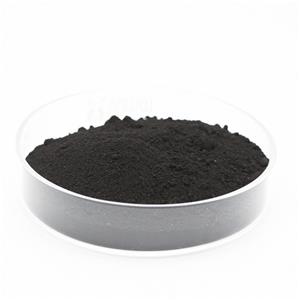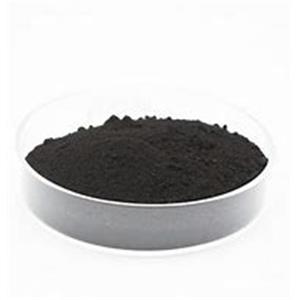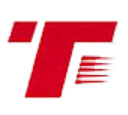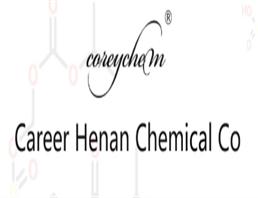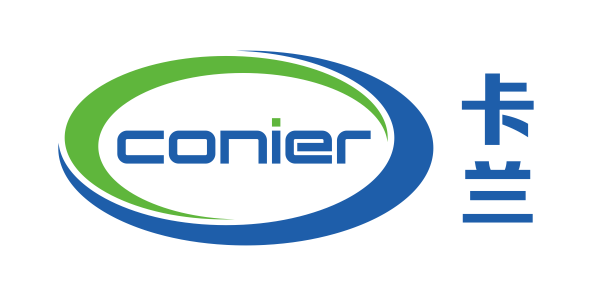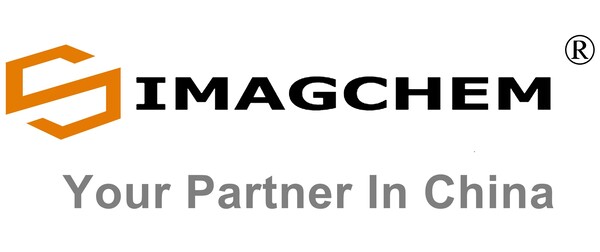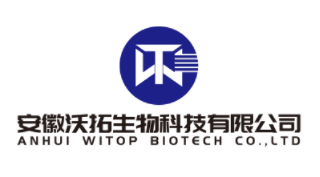Nickel suppliers
Nickel
- CAS:
- 7440-02-0
- MF:
- Ni
- MW:
- 58.69
Suppliers by country/region
Company Type
Properties
- Melting point:
- 1453 °C (lit.)
- Boiling point:
- 2732 °C (lit.)
- Density
- 8.9 g/mL at 25 °C (lit.)
- vapor density
- 5.8 (vs air)
- storage temp.
- no restrictions.
- solubility
- insoluble in H2O; slightly soluble in dilute acid solutions
- form
- wire
- color
- White to gray-white
- Specific Gravity
- 8.9
- PH
- 8.5-12.0
- Odor
- Odorless
- PH Range
- 9 - 11 at 20 °C
- Resistivity
- 6.97 μΩ-cm, 20°C
- Water Solubility
- It is insoluble in water.
- Sensitive
- air sensitive
- Merck
- 14,8107
- Exposure limits
- TLA-TWA (metal) 1 mg/m3 (ACGIH, MSHA, and OSHA); (soluble inorganic compounds) 0.1 mg(Ni)/m3 (ACGIH) 0.015 mg (Ni)/m3 (NIOSH); (insoluble inorganic compounds) 1 mg/m3 (ACGIH).
- Stability:
- Stable in massive form. Powder is pyrophoric - can ignite spontaneously. May react violently with titanium, ammonium nitrate, potassium perchlorate, hydrazoic acid. Incompatible with acids, oxidizing agents, sulfur.
- InChIKey
- PXHVJJICTQNCMI-UHFFFAOYSA-N
Safety Information
- Symbol(GHS)


GHS07,GHS08
- Signal word
- Danger
- Hazard statements
- H317-H351-H372
- Precautionary statements
- P201-P202-P260-P280-P302+P352-P308+P313
- Hazard Codes
- C,Xi,Xn,F,T
- Risk Statements
- 34-50/53-43-40-10-17-52/53-48/23
- Safety Statements
- 26-45-60-61-36-22-36/37-16-15-5-36/37/39-43-28
- RIDADR
- UN 1493 5.1/PG 2
- WGK Germany
- 3
- RTECS
- VW4725000
- F
- 8
- Autoignition Temperature
- 87 °C
- TSCA
- Yes
- HazardClass
- 4.1
- PackingGroup
- II
- HS Code
- 38151100
- Toxicity
- Occupational exposures may occur in its mining, smelting, and refining. The general population ingests nickel in food. Skin sensitization and dermatitis leading to chronic eczema, called “nickel itch,” frequently occurs, especially in wearers of pierced earrings. Nickel can also irritate the conjunctiva and respiratory tract mucous membranes. Absorption from the digestive tract is poor, so systemic poisoning is rare, but since it is an irritant it acts as an emetic. Systemic effects include hyperglycemia, capillary damage, CNS depression, myocardial weakness, and kidney damage. Nickel and its compounds are carcinogenic following inhalation, but not following ingestion or skin contact. Cancer of the lung and nasal passages results, with a latent period of about 25 years; smokers are at greater risk. In addition to irritation and carcinogenesis, nickel carbonyl (nickel tetracarbonyl, Ni(CO)4) exerts relatively mild, tran_x0002_sientinitial symptoms including headache, giddiness, nausea, and shortness of breath. These symptoms are followed by very serious symptoms hours to days later, consisting of tightness in the chest, shortness of breath, rapid respiration, pulmonary edema, cyanosis, and extreme weakness; this can be fatal. Heat decomposition of nickel carbonyl yields carbon monoxide. Chelating agents can be used to remove nickel from the body.
- IDLA
- 10 mg Ni/m3
Use
Nickel usually is recovered from its sulfide ore, pentlandite (Ni,Fe)9S16. Although laterite type oxide ores sometimes are used as starting materials, pentlandite is used in many commercial operations. Pentlandite often is found in nature associated with other sulfide minerals, such as pyrrhotite, Fe7S8,and chalcopyrite, CuFeS2. The ores are crushed and powdered. Sulfides are separated from gangue by froth flotation or magnetic separation processes. After this, the ore is subjected to roasting and smelting. These steps are carried out initially in rotary kilns or multihearth furnaces and then smelting is done in either blast furnaces or reverberatory, or arc furnaces. Most sulfur is removed as sulfur dioxide. Iron and other oxides produced in roasting are also removed along with siliceous slag during smelting. A matte obtained after smelting usually contains impure nickel-iron-copper sulfides and sulfur. The molten matte is treated with silica and an air blower in a converter in the Bessemerizing stage to remove all remaining iron and sulfur. Copper-nickel matte obtained in this stage is allowed to cool slowly over a few days to separate mineral crystals of copper sulfide, nickel sulfide and nickel-copper alloy. The cool matte is pulverized to isolate sulfides of nickel and copper by froth flotation. Nickel-copper alloy is extracted by magnetic separation. Nickel metal is obtained from the nickel sulfide by electrolysis using crude nickel sulfide cast into anodes and nickel-plated stainless steel cathodes. Alternatively, nickel sulfide is roasted to nickel oxide, which then is reduced to crude nickel and is electrorefined as above. Two other refining processes are also frequently employed. One involves hydrometallurgical refining in which sulfide concentrates are leached with ammonia solution to convert the copper, nickel, and cobalt sulfides into their complex amines. Copper is precipitated from this solution upon heating. Under such conditions, the sulfide-amine mixture of nickel and cobalt are oxidized to their sulfates. The sulfates then are reduced to metallic nickel and cobalt by heating with hydrogen at elevated temperatures under pressure. The metals are obtained in their powder form. The more common carbonyl refining process involves reaction of crude nickel with carbon monoxide under pressure at 100C to form nickel tetracarbonyl, Ni(CO)4. The liquid tetracarbonyl upon heating at 300C decomposes to nickel metal and carbon monoxide. Very pure nickel can be obtained by the carbonyl refining processes, as no other metal forms a similar carbonyl under these conditions. RANEY NICKEL is a hard, ductile, magnetic metal with a silver-white color. Ingestion of nickel can cause hyperglycemia,depression of the central nervous system,myocardial weakness, and kidney damage.A subcutaneous lethal dose in rabbits isin the range 10 mg/kg. The oral toxicityof the metal, however, is very low. Skincontact can lead to dermatitis and “nickelitch,” a chronic eczema, caused by dermalhypersensitivity reactions. Nickel itch mayresult from wearing pierced earrings. Inhalationof metal dusts can produce irritation ofthe nose and respiratory tract. Nickel andsome of its compounds have been reportedto cause lung cancer in experimental animals.It may also induce cancer in nose,stomach, and possibly the kidney. The experimentaldata on the latter, are not fully confirmative.Nickel refinery flue dust, nickelsulfide (Ni3S2) , and nickeloxide (NiO) produced localizedtumors in experimental animals wheninjected intramuscularly. IARC has classifiednickel and its compounds as carcinogenicto humans (IARC 1990). Inhalation ofmetal dusts can produce lung and sinus cancersin humans, with a latent period of about25 years.Nickel is susceptible to cross human placentaand produce teratogenesis and embroytoxicity. In vitro study on lipid peroxidationindicated that nickel induced peroxidativedamage to placental membrane causing decreased placental viability, altered permeabilityand subsequent embroy toxicity (Chenand Lin 1998). In a latter study, Chen et al.(2003) evaluated nickel-induced oxidativestress and effects of antioxidants in humanlymphocytes. The levels of intracellular reactiveoxygen species, lipid peroxidation andhydroxyl radicals were examined for one hourfollowing acute treatment with Nicl2. Thestudy showed that glutathione, catalase andmannitol each provided protection against theoxidative stress induced by Ni.The efficacy of organic chelating ligandsin cleaning human skin contaminated withnickel has been investigated (Healy et al.1998). Commercial liquid soap added withL-histidine was found to be more effectivethan the untreated soap. Similarly sodiumethylenediamine tetraacetic acid (EDTA)salt or L-histidine added to phosphate buffersaline solution was more effective in cleaningnickel contaminated human skin than thephosphate saline alone..Nickel (Ni) is a silver-white, ductile, malleable, yet tough metallic element of Group 10 (formerly Group VIII) of the Periodic Table. Mostly, nickel goes into the making of steel and other corrosion resistant alloys. Finely divided nickel is used as a hydrogenation catalyst. Nickel is a beneficial trace element for plants. Its presence in the urease enzyme underlines its importance as a functional element. It is essential for grain viability, in barley and at concentrations less than 100 μg/kg, the grain level and the germination frequency decrease progressively. The quantity of Ni in a few fertilizers is as given: 2 ppm in nitrochalk, 13 ppm in superphosphate and 10 ppm in FYM. Nickel is the metal component of urease that hydrolyzes urea to give ammonia and carbon dioxide. Compounds that react with nickel in the urease molecule inhibit the hydrolysis of urea. Nickel enhances the nodule weight and the seed yield of soybeans, chickpeas and temperate cereals. It is present in plants in the range of 0.1 to 1O ppm of the dry weight. High levels of Ni may induce Zn or Fe deficiency because of cation competition, and may create nickel toxicity. The browning and necrosis of the leaf tips and margins are the toxicity symptoms on the plant. High Ni content also causes the distortion of young leaves and the death of the terminal shoots of the plant. The emerging leaves may fail to unroll and become necrotic, with the necrosis starting from near the base and spreading toward the leaf tip. Nickel toxicity in cereals and grasses varies in the intensity of chlorosis along the length of the leaf with a series of transverse bands. Sewage sludge contains heavy metals like Ni, Cd, etc. that are absorbed by plants grown in soils contaminated with these heavy metals. The toxicity caused by these metals is in turn, passed on to animals that feed on such plants. Any regulation for sludge use should ensure that the soil pH is not lower than 6.5, as heavy metals are insoluble at pH greater than 6.5.Nickel was isolated first and recognized as an element by Cronstedt in 1751. The metal was derived in pure form by Richter in 1804. The metal takes its name from two German words ‘Nickel’ and ‘kupfernickel’, which mean Old Nick’s (or Satan) and Old Nick’s copper, respectively. The abundance of nickel in the earth’s crust is only 84 mg/kg, the 24th most abundant element. It is found in most meteorites, particularly in the iron meteorites or siderites, alloyed with iron. Its average concentration in seawater is 0.56 μg/mL. Nickel is one of the major components of the earth’s core, comprising about 7%. The most common nickel ores are pentlandite, (Ni,Fe)9S16, limonite, (Fe,Ni)O(OH)?nH2O, and garnierite, (Ni,Mg)6Si4O10(OH)8. Other ores that are of rare occurrence are the sulfide ores, millerite, NiS, polydymite Ni3S4 and siegenite, (Co,Ni)3S4; the arsenide ores niccolite, NiAs, gersdorffite, NiAsS, and annabergite, Ni3As2O8?8H2O; and the antimonide ore, NiSb. Skin contact can cause dermatitis and a type of chronic eczema, known as “nickel itch”, caused by hypersensitivity reactions of nickel on the skin (Patnaik, P. 1999. A Comprehensive Guide to the Hazardous Properties of Chemical Substances, 2nd ed. pp. 621-622, New York: John Wiley Sons.) Although oral toxicity of the metal is very low, ingestion may cause hyperglycemia and depression of the central nervous system. Chronic inhalation of nickel dust can cause lung and sinus cancers in humans. Nickel and certain of its compounds are listed by IARC under Group 2B carcinogens as “possibly carcinogenic to humans” (International Agency for Research on Cancer. 1990. IARC Monograph, Vol. 49: Geneva.)
352 supplier list of "Nickel"
$18000.00/ 1TON
- Product Name:Nickel Powder
- Products Intro:Purity: 98% | Package: 1TON;18000USD
- Company Type: Trader
- Country/Region: CHINA
- Main Products: Lithium hydroxide,lithium carbonate,bronze powder,lithium chloride,lead powder
$6.00/ 1KG
- Product Name:Nickel
- Products Intro:Purity: More than 99% | Package: 1KG;6USD
- Company Type: Trader
- Country/Region: CHINA
- Main Products: chemical raw material,food additives,medical intermediate,inorganic salt,chloride

- Product Name:Nickel
- Products Intro:Purity: 99.9%
- Company Type: Service
- Country/Region: CHINA
- Product Name:Nickel
- Company Type: Reagent
- Country/Region: CHINA
- Main Products: Gamma-butyrolactone



